Probably a large part of the texts you had the opportunity to prepare hid one basic goal – SEO. I bet you have heard the following words from your principal many times: “Please include these keywords“, although you didn’t quite realize what they really were. Let me in this article introduce you to the world of SEO, which as a copywriter you should know. Ready for the journey? Ahead of you is the SEO tutorial for content creators! SEO copywriting will have no secrets from you.
From the beginning, or what is SEO anyway?
.
This mysterious-sounding word is an acronym for Search Engine Optimization and refers to the activities involved in trying to get a given site to the highest possible positions in search engines.
With higher positions, more people will notice your site and are more likely to visit it. More traffic brought to the site is, in turn, an increase in potential profit..
Depending on the period studied, the Polish market is nearly 90-99% dominated by the Google search engine*, so let me refer mainly to it in the following text.
*The share of individual search engines in the Polish market in January 2023 was as follows:
- Google – 92.23%
- Bing – 3.65%,
- Yandex – 1.98%
- Yahoo – 0.97%
- DuckDuckGo – 0.53%
- Ecosia – 0.29%
- Other – 0.35%
.
.
.
.
.
On- and off-site positioning, or types of SEO
.
As many SEO specialists, as many opinions on the division of SEO types. However, no one argues that there are its following varieties:
– Onsite SEO – that is, activities focused inside the website. It consists of both taking care of strictly content (friendly and intuitive layout, good text SEO, nice pictures, graphics, headlines, etc.). – so-called content SEO, as well as technical (site loading speed, lack of errors, responsiveness, or at least “cleanliness” of the code) – so-called technical SEO.
Offsite SEO – is, on the other hand, work that focuses on positioning outside of one’s own website. We are talking about the so-called linkbuilding, i.e. placing links to a given site on other websites. Linkbuilding can take many forms, but the most well-known places to place links are:
- “sponsored” articles – substantive articles placed on sites with similar topics to the site being positioned. Usually their authors are the publishing sites, not the ones that position.
- guest blog posts – specialized articles posted on blogs and portals that are thematically related. In this case, the authors are usually signed and clearly indicate what website they represent.
- entries in directories – so-called business cards of companies and websites placed in popular directories and registries of companies.
- comments on forums and blogs – links placed in posts under blog entries or in threads on Internet forums.
.
.
The most valuable are naturally acquired links via substantive articles and blog posts. On the other hand, of lesser importance (but still cannot be ignored!) are presented by directory entries and comments on blogs and forums. Of course, they are still applicable in some cases (e.g., online stores), but even so, some SEO specialists are increasingly moving away from such practices. .
Through offsite SEO, we give Google a sign of how a site is perceived by other websites.
If strong and stable sites are linking to it – this can be a sign that a given site is valuable and should be given higher rankings. In a situation where the links come mainly from weak or even “suspicious” sites – Google may act the opposite and even penalize the site in question.
You as an SEO copywriter (or content writer) are naturally closest to the former type of helping a given site’s position in Google.
Approaches to SEO – White Hat versus Black Hat
.
I admit, I haven’t told you about all types of SEO yet. In addition to the strictly technical division presented above, we can additionally distinguish a division that does not so much characterize SEO itself, but rather the people who do SEO and the techniques they use to do it?
“Legitimate”, or White Hat SEO
.
White Hat SEO is SEO that is honest and complies with the rules set by Google. Correctly applied White Hat techniques in the long run usually bring the desired results.
What do we count as White Hat SEO?.
In short, it is taking care of every aspect of SEO:
- meritorious and fully unique content – not copied from other sites and meeting the expectations of the audience (educating and giving them answers to specific questions).
- extended texts – long and comprehensive on a given issue.
- natural links – coming from sites with a good reputation.
.
.
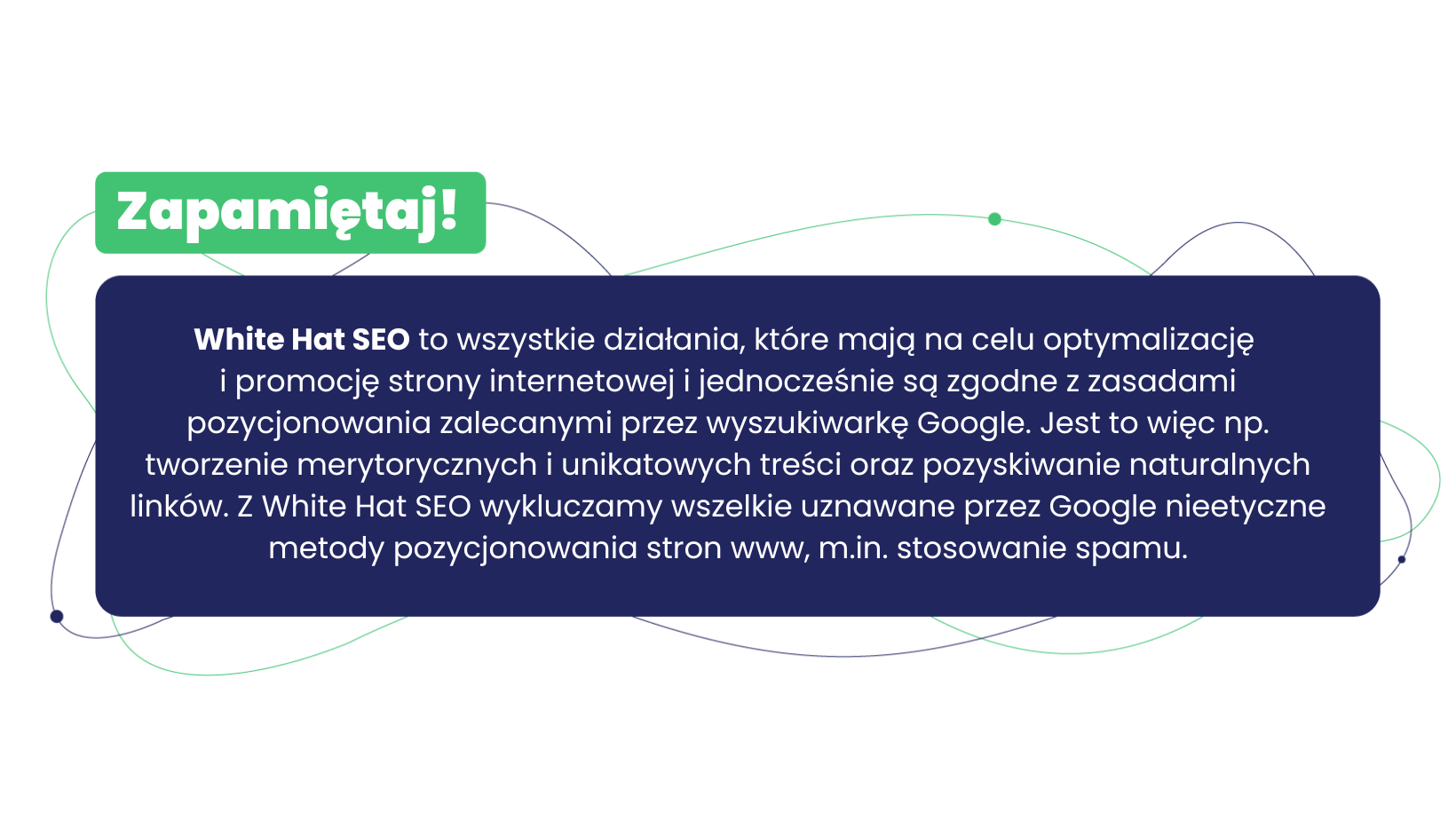
Wypróbuj Senuto Suite przez 14 dni za darmo
Zacznij 14-dniowy trial za darmoBlack Hat SEO, or the opposite of the above
.
Black Hat SEO is a dishonest game. The only advantage of this type of action is its speed. SEO done in an illegal way is effective, but only in the short term. In the long run, it almost always ends in a ban from Google and a lifetime of non-being in search results.
What counts as Black Hat SEO?.
In a nutshell, it’s “riding the bandwagon” and imitating any means available to skyrocket up the search results:
- poor content – written “for art” and just to get more.
- copied texts, often even stolen from other sites.
- spammy links, obtained in unnaturally large quantities, usually from sources with poor reputations. Buying bulk links from other countries (mainly China and India) is a popular method.
.
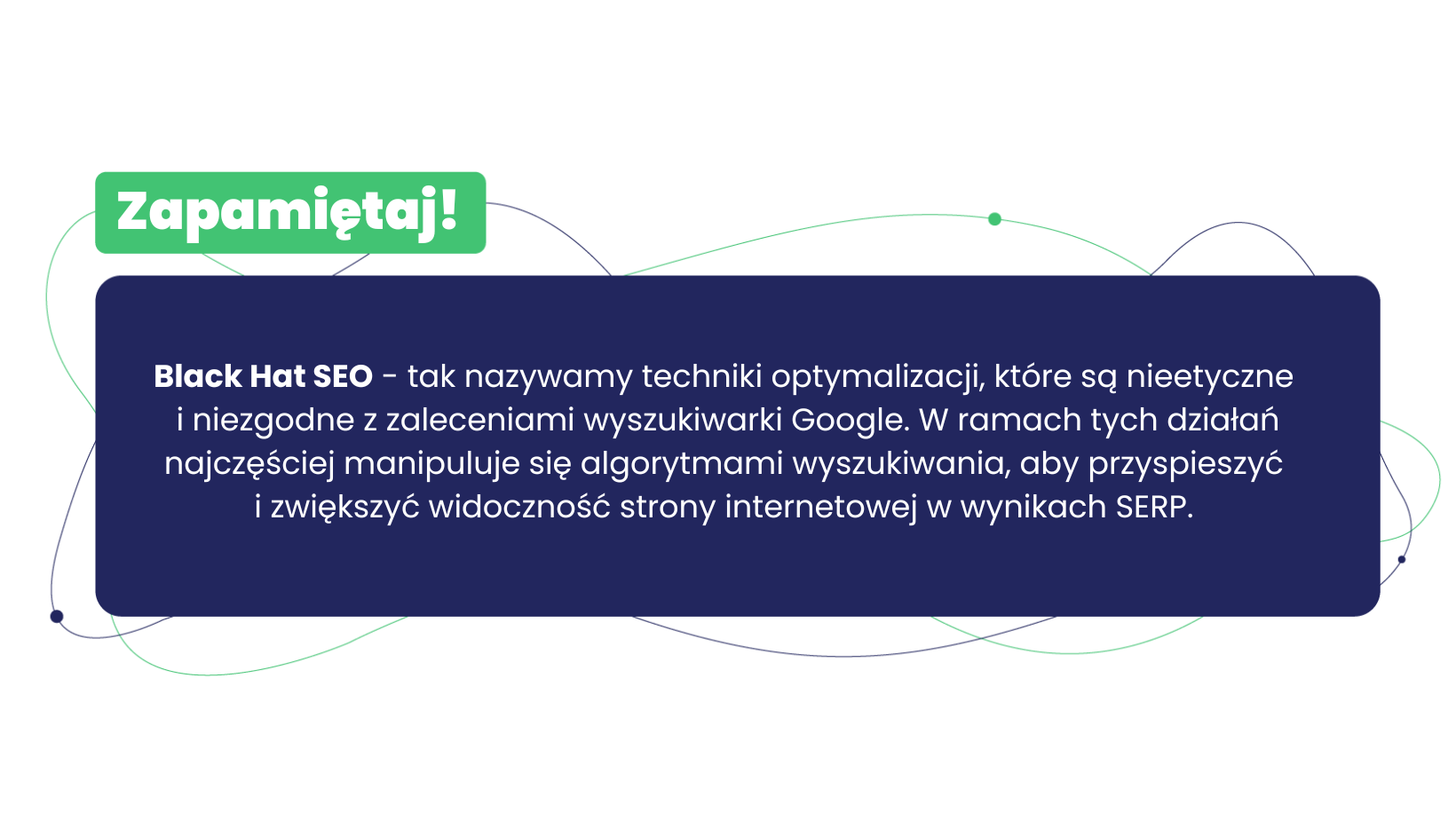
For my part, I recommend only to conduct activities using white hat ????.
SEO copywriting – what is it?
.
You already have one foot in the world of SEO definitions. It’s time to take the next step and understand what SEO copywriting is. .
I probably don’t need to explain to you what a copywriter does. Over the years, however, the profession has managed to split into different specialties. This is how SEO copywriting came into being. .
SEO copywriting involves creating texts that meet the requirements of, for example, Google and aim to achieve high positions in search results. SEO copywriter thus writes substantive content that is optimized for selected key phrases and that is understandable to users and useful to them.
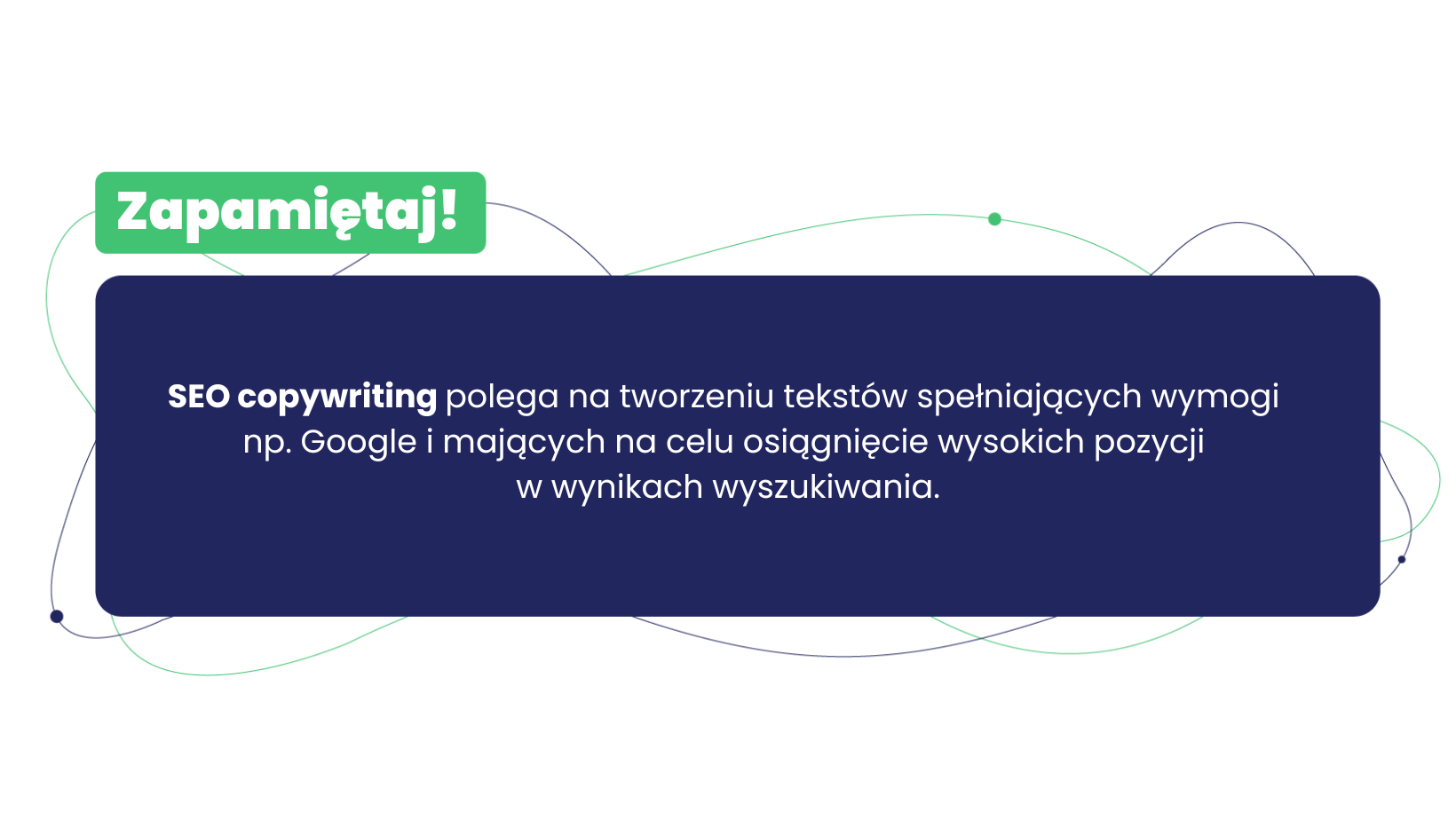
A content writer engaged in SEO copywriting should attach great importance to:.
- uniqueness of content,
- content level of the text,
- the credibility of the topics presented,
- the development of the entire issue,
- the needs and intentions of the recipient,
- research similar content from competitors.
.
.
.
.
.
Read also: Copywriting in social mediahow to write so people respond?.
Concepts in SEO you need to know
.
You already know what SEO is and what it is used for, as well as the division used. Now it’s time for some concepts that will come in handy and expand your knowledge of SEO.
1. Mysterious-sounding SERPs
.
SERP is an acronym for Search Engine Results Page, which in Polish simply means search results. These are the content (links, titles and meta descriptions) that you see as soon as you type a search term into Google phrases. You’ll read about the latter two (meta titles and meta descriptions) in the following sections.
SERPs are all the organic (i.e., non-paid) results that a user sees. By force of fact, he always clicks on the ones that are “highest” and usually on the 1st page. And this is the whole essence of activities centered around SEO – create content, optimize pages, build links. All this to get as high as possible in Google’s search engine results pages (SERPs).
Why is it so important .
The old saying goes: if you want to hide a corpse – place it on the second page of Google. That’s where no one looks. Regularly published reports seem to confirm this thesis – the higher a page ranks, the more likely it is that a user will click on it.
More than 20% of all clicks are recorded by sites ranked first in search results. The No. 2 spot is already “only” 15%, No. 3 – less than 10%, and so on, until the 10th place, which accounts for only 1% of all clicks. In sum, over 70% of all their clicks are left by users on the first page. The remaining 30% goes to the rest – from 2 to as many as a few dozen.
I hope you now realize that your job is not just “clogging up” a given page with content or writing articles “for nobody.” What you do (if you do it well) really affects the positioning of websites and either their success or failure.
2. Words or as you prefer – key phrases
.
Many factors influence the visibility of a website in Google. These include such factors as a well-optimized site and properly selected links leading to the site, but it all starts with properly selected phrases. These are the ones that let both Google and “ordinary” users know what the site is actually about.
When writing texts, as well as creating headlines for SEO, you’ve probably more than once been asked to include somewhat strange phrases. At first glance it may have seemed pointless to you, but now you know that their purpose was to position the page.
How to choose and where to get ideas for key phrases?
.
If you thought that choosing such and not other words is just an SEOwoman’s invention, you were wrong. Every SEO specialist works on data that provides him with information on what words to use, where, in what frequency, and even in what nature (link, headline, plain text).
Yes, intuition comes in handy, but there’s no fooling around – without tools that have the right data, there’s no way to do professional SEO.
So where to get inspiration for keywords?
.
With help comes at least Senuto and its Keyword Database. All you have to do is enter a few phrases that seem attractive to you into the tool, and after a while you get a table filled with proposals for other keywords. In it you will get information about the phrases along with average monthly number of their searches in Google, price per click (if, by the way, you want to operate, for example, in Google Ads) and some other interesting information.
Senuto’s AI-backed Senuto AI Writer is now also a great help. All you have to do is fill in the relevant keywords in the panel, enter your domain address, select competitors (optional) and generate guidelines. Writer will prepare them based on the analysis of current results in Google, our database and AI guidelines. .
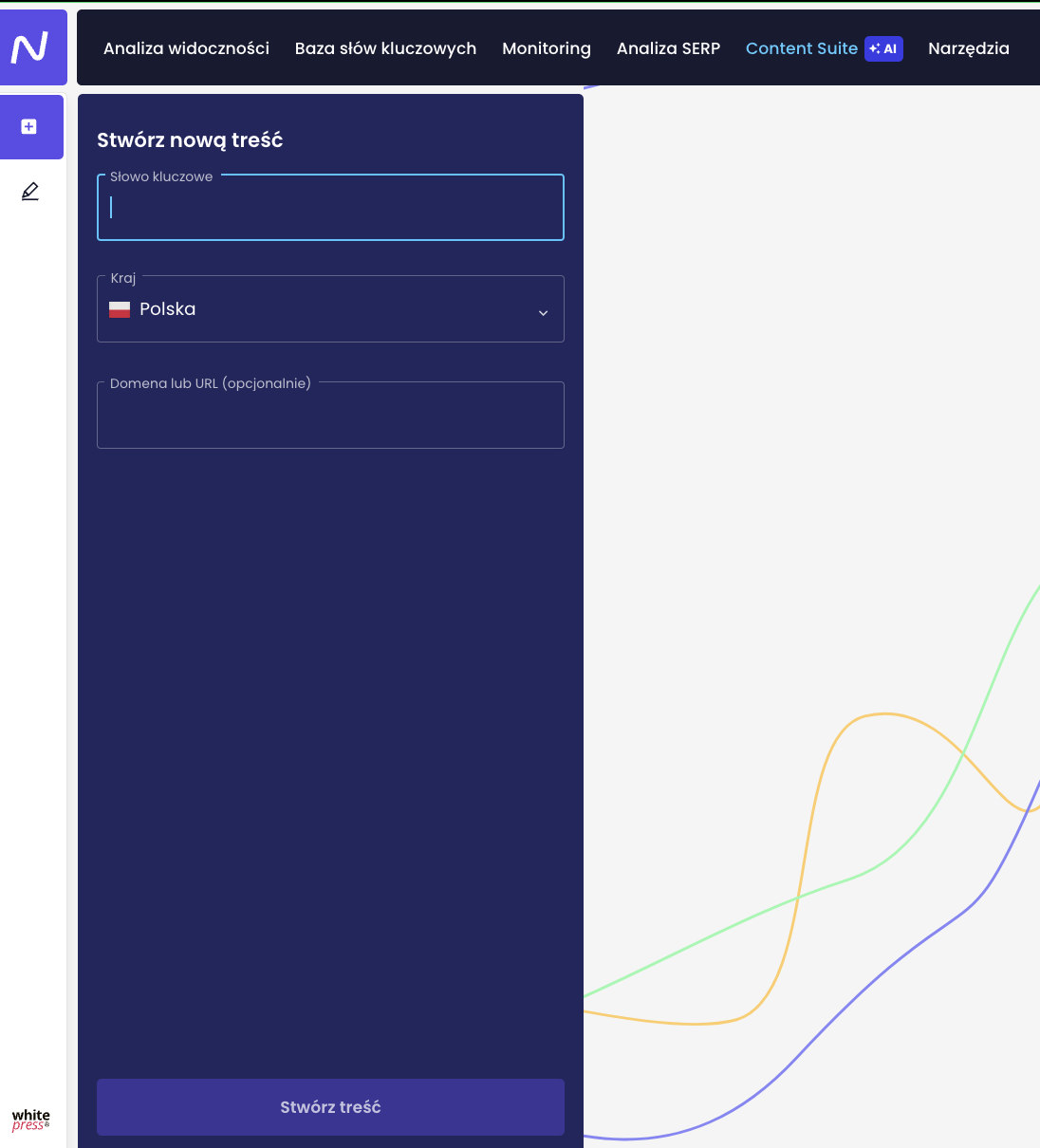
Lack of inspiration?
.
Even the best tools can fail if the phrases you type in aren’t very popular and you have to look for substitutes for them. No worries, there are ways to do that too. A great tool that will give you lots of ideas for new keywords is Answer The Public, for example.
How does it work? You type in a phrase, click and wait for a list of results – simple!
Key phrases – what does this mean for you as a copywriter?
.
Remember that SEO texts are designed to do one basic thing – actively support the positioning of the website. When writing them, don’t forget to use relevant keywords, their variations and various combinations. Write texts that are substantive and with the idea that they will be read by humans, not robots. This will definitely translate into SEO results!
3. Headings in SEO – what are they for?
.
Headings like h1, h2, h3, …all the way up to h6 are an indispensable element to support page optimization for SEO. In addition to simply structuring the content (and making order) on the pages, they have another important role. This is because they are a kind of indicator for Google, telling it what a website is about. Headings are crucial and it is they should contain the most important phrases for which we want to position a particular subpage.
The importance of headings in SEO
.
Headings are numbered from most important to least important. Therefore, naturally the most important headline is h1 and it is the only one that can appear only once on a single subpage*. Each subsequent one (h2, h3, h4, h5, h6) can be used any number of times. Just be sure to structure them properly – the more important the content, the higher the headline.
In practice, it is rather rare to find headings from 4 to 6. Most SEO specs use the first three parameters.
* Some SEOs adhere to the rule that the number of h1 headers does not matter, however, I subscribe to the thesis that one subpage = 1 h1 header.
What as a copywriter do you need to know about headings?
.
Headings play a key role in any text and on any website. On the one hand, they must encourage further exploration of the text, while on the other hand, they must contain appropriately chosen key phrases.
That’s where your role comes in – combining both worlds and creating headlines that are effective on every level – both communication and SEO ????.
4. Meta titles
.
Known in English as meta title – meta titles are the content that a user sees first in search results. It’s the big title visible above the smaller gray text.
 .
.
What is important is that meta titles have two essential roles:.
- on the one hand, they are responsible for informing the user what the page is about and encourage them to click (that’s why you need to remember to put “catchy” keywords in them);
- on the other hand, meta titles influence the positioning of the site(therefore you must not forget to include the most important key phrases in them);
.
.
As you’ve probably noticed, there’s not much room in meta titles for writing elaborations. Google requires that this kind of content must fit in an area 512 pixels wide, and thereforethe maximum amount of text should not exceed 67-70 characters.
Meta titles in the work of a copywriter
.
You need to remember that meta titles are one of the first pieces of information that a user sees immediately after typing in the search term they are looking for. Their importance can be compared to headings (especially of the h1 type). This is because they influence SEO, while at the same time, by their design, they must encourage the user to click.
5. meta descriptions
.
In addition to the already mentioned meta titles and the url itself, meta descriptions are also presented in search results. You can enter them manually (making sure they meet certain criteria), and if they are missing – Google will “read” the content directly from the subpage.
For the sake of greater control, the possibility of automation, and above all optimization – I 100% recommend using manual definition of meta description.
This not only simplifies the work on SEO, but avoids many unpleasant consequences (such as loading into the search results not what is needed ????).
Meta descriptions do not directly affect SEO…
.
…but they do indirectly influence ????. Therefore, when creating them, we can let our imagination run wild and focus not so much on choosing the right key phrases, but on benefit language that will convince the user to click. A meta description will not improve position, but it can effectively translate into an increase in click-through rate (aka CTR).
Read also: What do we know about CTR from SEO? A study of 8,452,951 phrases.
Here, as with meta titles, there are also restrictions on the length of content we can “stuff” into them. Google gives us a bit more leeway –because a single meta description can fit as many as 155-160 characters..
But if you care about automating tedious tasks, you can also put the creation of meta titles and meta descriptions in the hands of Senuto Writer. For each text you create in it, you can generate 3 meta tag suggestions either based on a keyword or on the content you create. And that’s all within the Senuto package..
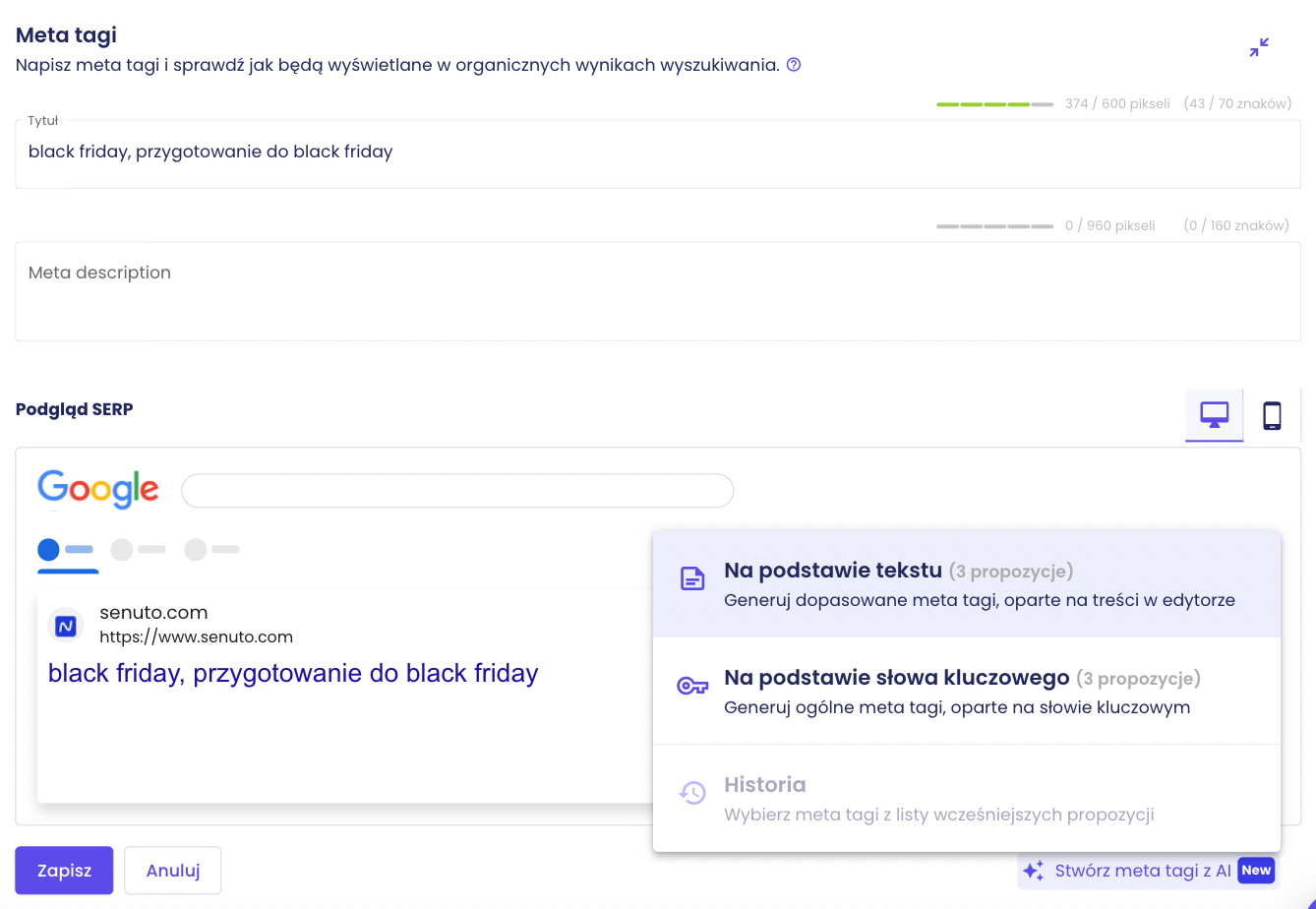
6. Alty, or popular alt attributes
.
Alts, also known as alternate text, are used to describe all sorts of images and graphics placed on websites. This is done through dedicated CMSs (WordPress, Drupal, Joomla, etc.), as well as directly in the code of the site.
Why? Google is a very powerful and intelligent tool, but it still can’t read what’s in the images published on the web. It is the alts that give Google clear information about what a particular graphic presents.
For an ordinary user, at first glance alts are usually invisible. To verify them, check the page code.
7. Duplicate content – repeating and copying content
.
Duplicate content is simply duplicate content in Polish. Under this name iscontent that has been copied from elsewhere (from the same or another site).
Google pays special attention to the issue of originality of texts presented on pages. Unique and valuable texts are promoted, while those that Google deems plagiarized – negatively affect the visibility of websites.
Therefore, under no circumstances can you use even fragments of content from other places on the web in your texts. You can be inspired, referenced, but never copy! For SEO, such an action may be effective for a while. However, duplicate content is part of the aforementioned Black Hat SEO and always ends the same way – a ban from Google.
8. Thin content – writing little and meaningless is not SEO copywriting
.
As I mentioned before – the Google uncle appreciates content. The more substantive and elaborate, the better. The opposite of this type of content is the so-called thin content, i.e. pages or sub-pages made en masse, poor in content (both quantity and quality). Needless to say, thin content should be avoided ?????
When creating content, remember to always carry substantive value, and make at least some effort to exhaust a given topic. You can enrich each text with additional bullets, a summary of the content written above, or a more elaborate CTA placed at the very end. In this way, initially even the smallest content can be quickly and effectively expanded.
Thin content is perceived worse than no content, so if you don’t have an idea for content – wait until it comes and only then publish.
9. Topical Authority, because credibility is key
.
Can a website have authority! A while back, it turned out that it does. And that this authority – as it happens in life – matters a lot..
A reflection of a domain’s authority (in Google’s estimation) is precisely topical authority..
This particular element is influenced by, among other things:.
- meritorious content covering a larger thematic issue – from different points of view,
- the author of the text who is a specialist in the topic on which he or she is speaking,
- use of semantic keywords.
.
.
Read also: Semantic SEO. Learn how Google really works and use it for higher rankings.
SEO for the copywriter – how to create content optimized for SEO?
.
There’s quite a lot of information to absorb – that’s true. So it’s a good thing that you live in a world where (more or less) reliable helpers have already been created for many tasks..
This includes the AI content generator available in Senuto Writer. Such tools support both beginners and experienced copywriters.
How to learn SEO copywriting with the help of artificial intelligence?
.
I am of the opinion that AI will not replace trained copywriters. Instead, it is able to take part in their learning process. .
Imagine the following situation: you start learning copywriting. You hear all those foreign-sounding terms like topical authority, SERPs or whatever, and you just get lost in the nooks and crannies of the material to be assimilated. Something dawns on you, but not all of it yet. .
In this situation, you reach for a tried-and-true tool, generate content for a specific domain under the previously indicated words and… analyze.
I’ll show this with the example of Senuto Writer, which generates:.
- a list of key phrases to use,
- outline of text to develop independently,
- ready text to meet search engine requirements,
- meta title and meta description.
.
.
.
You don’t even need IQA to work with our Writer! This way you can see the prepared guidelines for texts written for SEO, analyze the key phrase selection key or text construction. .
Additionally, just working together as a team with Writer refines your skills – you can see exactly which of your actions (e.g. phrase usage, phrase variation, adding an internal link or graphic, etc.) increase Content Score..
ERGO – you learn on a living organism, that is, in the best possible way.
SEO for copywriter – what to keep in mind when creating content for SEO?
.
The best content “for SEO” is that written “for a live audience”. There is no doubt about it. Google is paying more and more attention every year to ensure that search results reflect exactly what the user is looking for. That’s why texts written for SEO must first and foremost meet the needs of users..
I hope you learned new things after reading this article, and your SEO knowledge has improved significantly.
 Mateusz Winkler
Mateusz Winkler